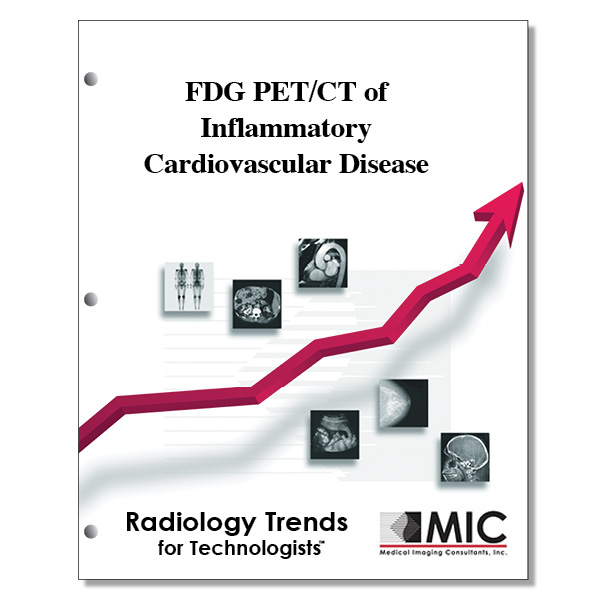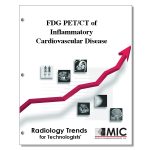

FDG PET/CT of Inflammatory Cardiovascular Disease
The diagnosis and management of inflammatory processes of the cardiovascular system affecting the myocardium, pericardium, and blood vessels are reviewed.
Course ID: Q00374 Category: Radiology Trends for Technologists Modalities: Cardiac Interventional, CT, Nuclear Cardiology, Nuclear Medicine, PET, Sonography2.5 |
Satisfaction Guarantee |
$29.00
- Targeted CE
- Outline
- Objectives
Targeted CE per ARRT’s Discipline, Category, and Subcategory classification:
[Note: Discipline-specific Targeted CE credits may be less than the total Category A credits approved for this course.]
Cardiac-Interventional Radiography: 1.50
Procedures: 1.50
Diagnostic and Conduction System Studies: 1.50
Computed Tomography: 1.50
Procedures: 1.50
Neck and Chest: 1.50
Nuclear Medicine Technology: 2.50
Procedures: 2.50
Cardiac Procedures: 2.50
Registered Radiologist Assistant: 2.50
Procedures: 2.50
Thoracic Section: 2.50
Outline
- Introduction
- FDG PET/CT Protocol
- Myocardial Disease
- Sarcoidosis
- Myocarditis
- Pericardial and Epicardial Disease
- Pericarditis
- Epicarditis
- Vascular Disease
- Atherosclerosis
- Vasculitis
- Summary
Objectives
Upon completion of this course, students will:
- be familiar with the affects inflammatory disorders have on the cardiovascular system
- be able to identify the symptoms of vasculitis
- list the advantages of FDG PET/CT to detect inflammatory processes
- be familiar with the imaging modalities traditionally used to diagnose cardiac disease
- be familiar with the established role of FDG PET/CT in the clinical setting
- be able to identify the radionuclide used in FDG PET/CT
- be familiar with the energy of PET photons
- know the physical half-life of 18F
- identify the normal distribution of FDG in healthy myocardium
- identify the primary factor that determines FDG uptake in the myocardium
- be familiar with the differences of FDG distribution in the ventricles of the heart
- identify the fasting time necessary to reduce normal FDG myocardial uptake
- identify the causes of inflammatory cardiomyopathy
- know which imaging modalities provide a more direct assessment of infiltrative processes within the myocardium
- be familiar with the potential limitations of using MRI when imaging sarcoidosis patients
- identify the testing characteristics of the cardiac biomarker CK-MB for diagnosis of myocarditis
- be familiar with the effects of radiation therapy or chemotherapy on FDG uptake in the myocardium
- identify which class of drugs have a cardiotoxic effect
- be familiar with the most common cardiovascular diseases
- identify what is currently the most sensitive and specific cardiac biomarker for myocardial damage
- understand the imaging features of pericarditis using FDG PET/CT
- know the imaging modality that is best suited for detecting pericarditis
- be familiar with the manifestations of epipericarditis
- identify the treatment for epipericardial fat necrosis
- be familiar with the most common cause of myocarditis in North America and Europe
- be familiar with the “gold standard” for definitively diagnosing myocarditis
- know what modality is considered the first-choice for diagnosing myocardial disease
- be familiar with radionuclides that have been used for inflammation or infection of the myocardium
- be familiar with the CMR imaging techniques recommended for diagnosing myocarditis
- identify the vessel diameter most commonly seen when atherosclerosis is visualized on FDG PET/CT
- be familiar with the most common large cell vasculitides
- identify which population is most affected by Takayasu arteritis
- be familiar with the specificity of FDG PET/CT for detecting large vessel vasculitis
- understand the classification of vasculitis
- be familiar with the laboratory test results indicative of active vasculitis
